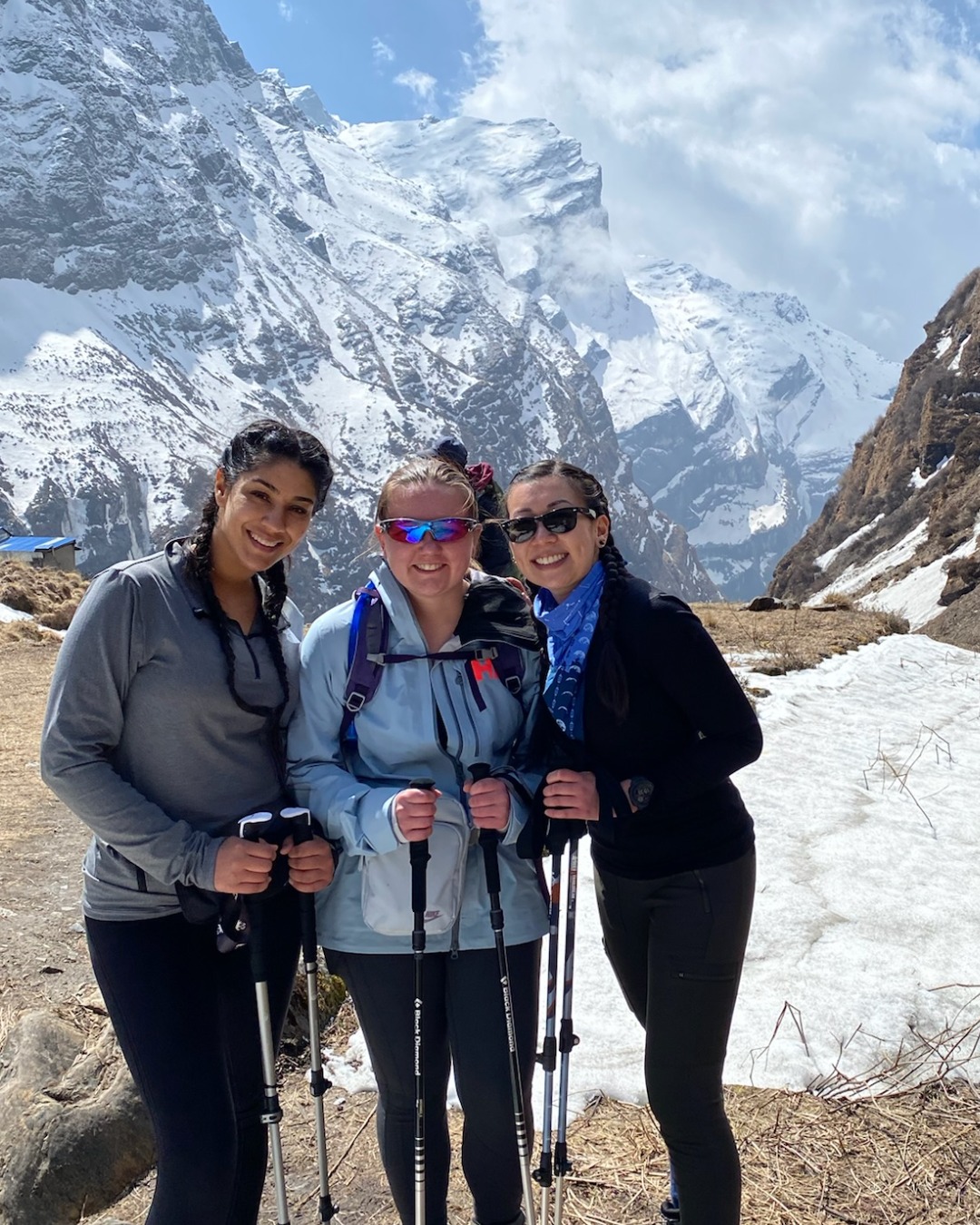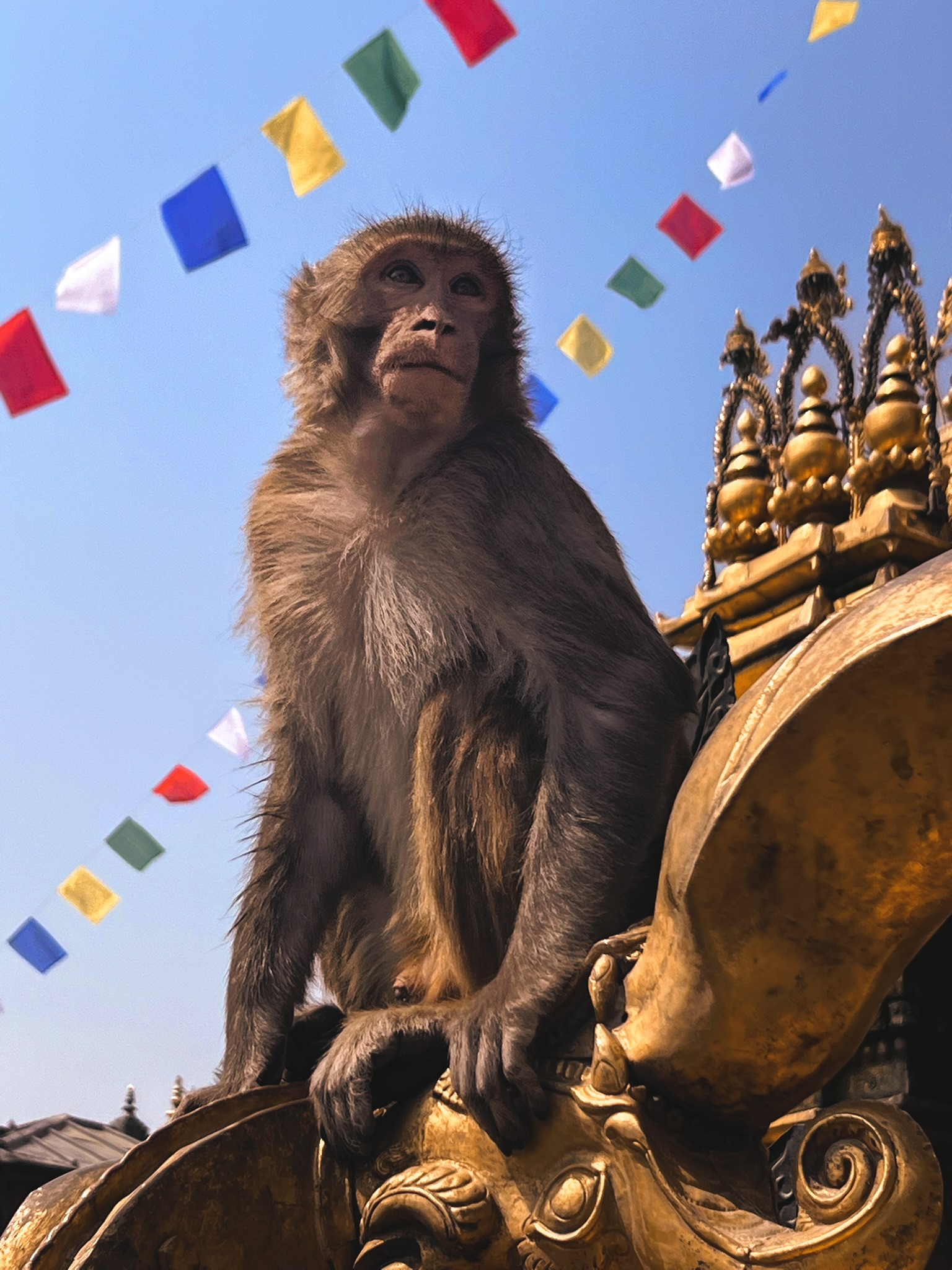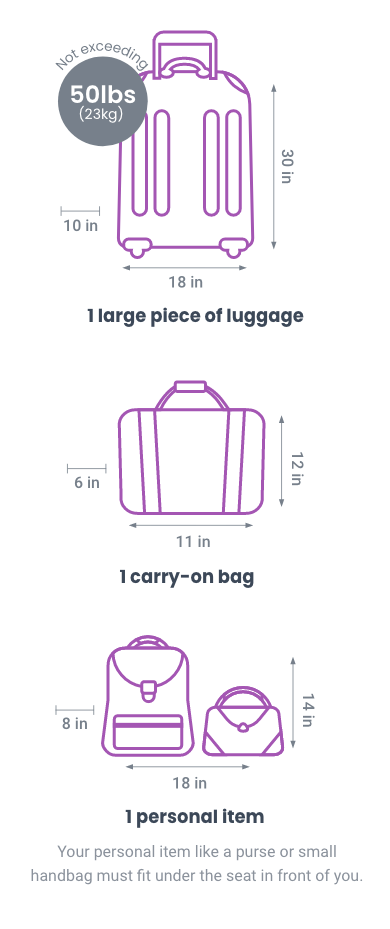About Nepal
Overview
Breathing in and out seems so simple and yet, in Nepal, excitement and wonder come with each breath. The excitement of climbing up the Himalayan Mountain passes and the wonder of nature as you take in the sheer beauty of the surrounding vistas. If your journey has you searching for spirituality and balance, Nepal lives it, in its temples, in the serenity of its people and in the breathtaking mountains, lakes and countryside.
**TRIP DISCLAIMER: A high level of fitness and prior hiking experience is required to join this adventure. The trek gains more than 84,000 feet in elevation in high-altitude conditions. If you are unsure if this trip is right for you, please consult with a doctor before booking.
TRAVEL INSURANCE REQUIRED: Due to the trek’s high elevations, our operator requires travel insurance covering high-altitude treks to be purchased before departure. TrovaTrip recommends World Nomad’s Standard Policy, which covers treks up to 19,685 feet (6,000 meters): worldnomads.com
Capital City: Kathmandu
Population: 30.1 million (2022 est.)
Currency: Nepalese Rupee
Time Zone: Nepal Time - (GMT+5:45)
Emergency Number: 100
Outlet: Type C,D & M


Packing List
Speak the Language
Language: There are approximately 123 different languages spoken in Nepal with only 44% of the population that speaks the national language, Nepali.
- Hello - Namaskara
- Goodbye - Alavida
- Thank you - Dhan’yavada
- Do you speak English? - Ke tapa im angreji bolnuhuncha
- I (don’t) understand - Maile bujhina
- How are you? - Timila i kasto cha
- I’m fine, thank you - Ma arama chu dhan’yavada
- What’s your name? - Timro nama ke ho
- My name is… - Mero nama ...
- Where is the bathroom - Kaham cha batharuma
Google Translate: Download the Google Translate app or click here
-1.jpg)
Weather
KATHMANDU WEATHERTraining Ideas
If you have access to hiking trails and a schedule to accommodate it begin walking and hiking in hilly/steep terrain. Nothing prepares you for a backpacking trip better than the activity itself! Try to get out at least 3 days a week. Start with short hikes (1-hour in length) with a light daypack. From week to week build the length and difficulty of your hikes and gradually increase your pack weight until you’re comfortably able to hike 6-8 hours a day carrying the weight you’ll have on your trip (refer to your trip packet for exact pack weight). It is ideal to begin your training at least 12 weeks prior to your trip. Also, be sure to use the boots you’ll have on your trip to break them in. The following is how a moderate program may look:
- First week of training
- Tuesday: one-hour hike with a daypack
- Thursday: one-hour hike with a daypack
- Sunday: 2-hour hike with a daypack
- Two weeks before the trip
- Monday: 3.5-hour hike with a 20-pound pack
- Wednesday: 2-hour hike with a 20- pound daypack
- Thursday: 3.5-hour hike with a 20-pound pack
- Sunday: 7-hour hike with the weight you’ll have on your trip
There are many other activities that are easily incorporated into your daily life to build your overall fitness. Cross-training is also important to strengthen opposing muscle groups and it helps to avoid over-use injuries.
Supplemental training ideas include:
- Climb the stairs at your office, house, park, or neighborhood with a backpack. Stair climbing is a fantastic way to simulate backpacking in hilly or steep terrain.
- Bike to work or when running errands. Bike around town or on country roads outside of your town/city. Cycling is a great way to build endurance and strength in your legs.
- Gym activities include step aerobics, treadmill, bicycling, or elliptical trainers to name a few. A modest weight training program focusing on the muscles that support the ankles, knees, back, and shoulders is also beneficial.
- Swimming is a great way to build endurance and cardiovascular fitness and is easy on the joints.
- Walk to work instead of driving. Run your errands by walking and carrying your groceries home in a backpack.
- Yoga and/or Pilates classes can build strength throughout your body while also improving your flexibility.
- Intramural sports.
- Jogging is another option, however, if you are not a regular runner it can easily lead to injuries that backpacking may then exacerbate. Undertake a jogging routine with care.
Tipping
Tipping Suggestions: Tips for Guides, drivers and restaurants are not included. Tips provide supplemental income, and, while not mandatory, are greatly appreciated. If the local teams have added to the experience, please reward them.
| Lead Guide | Up to $200 USD for the entire trek | |
| Assistant Guide | Up to $180 USD for the entire trek | |
| Porter | Up to $120 USD for the entire trek |
FAQ
Where can I find information on travel safety? Check out the US Department of State's website for the most up-to-date information on safety while traveling
Is the water safe to drink? Tap water and river water in Nepal are unsafe to drink and visitors ought to either drink bottled water, use purification tablets, or boil their drinking water.
Do I need a Visa? For Visa information, click here. Make sure your passport is valid for at least six months after you return home and has two or more blank pages. Otherwise, some countries may not let you enter.
What about vaccines? For vaccination information, click here.
Do you recommend travel insurance? While not required, we highly recommend all travelers get travel insurance for their trip to protect themselves from the unknown! Check out travel insurance options from our partner, worldnomads.com, or from a provider of your choice.
How much should I pack? As we will be using shared transfers and spaces throughout our tour we recommend all Travelers pack as lightly as possible. Please review our luggage restrictions below.
What does public transportation look like? Metered taxis are readily available around Kathmandu. Motorbikes and scooter taxis are also popular ways to get around. There are also public buses that service the entire Kathmandu Valley and are easily accessed at Ratnapark (Old Bus Park)
Is Uber or Lyft available? Motorbikes and scooters might be the fastest way around Kathmandu and the motorbike rideshare app is called Tootle.
Luggage Restrictions
.jpg)


